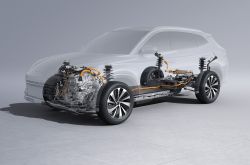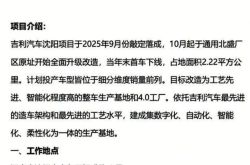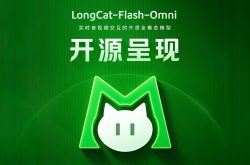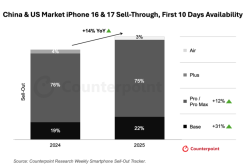Manfu Technology Claims Top Spot in Cyzone's 2025 Autonomous Driving Data Annotation Enterprises List
![]() 03/05 2025
03/05 2025
![]() 575
575
Recently, Cyzone unveiled its "2025 Top 10 Autonomous Driving Data Annotation Enterprises List," with Manfu Technology emerging at the forefront, thanks to its pioneering product technology solutions and unparalleled market influence:

As an internationally acclaimed innovative ecosystem service platform, Cyzone launched its autonomous driving data annotation evaluation for the first time this year, aiming to uncover the innovative forces shaping this emerging industry's new wave of transformation.
The criteria for the "2025 Top 10 Autonomous Driving Data Annotation Enterprises List" encompass technical proficiency, annotation quality, capital valuation, enterprise scale, and industry influence. A panel of experts from leading investment institutions meticulously assessed numerous candidates over several months to finalize the top ten enterprises.
As the domestic pioneer in autonomous driving data annotation, Manfu Technology's top ranking not only underscores the industry's high regard for its past achievements but also showcases the immense application value and commercial potential of its AI data annotation solutions in the autonomous driving realm.
Autonomous Driving Ushers in a Period of Rapid Growth
In today's fast-paced technological landscape, the autonomous driving industry is undergoing a transformative evolution.
Autonomous driving technology, a groundbreaking and cutting-edge innovation, promises to revolutionize transportation and travel methods, significantly enhancing travel safety and efficiency. It aligns seamlessly with new development paradigms such as greenness, low carbon, and sharing.
The government work report emphasizes the need to vigorously propel the construction of a modern industrial system, accelerate the development of new productive forces, harness the leading role of innovation, drive industrial innovation through scientific and technological advancements, hasten the progression of new industrialization, enhance total factor productivity, continuously cultivate new development momentum and advantages, and catalyze a new leap in social productive forces.
The high degree of innovation and vast application prospects of autonomous driving technology embody a quintessential example of new productive forces. Promoting its application is pivotal in building a robust transportation nation and driving industrial innovation and development.
Since 2024, with the advocacy of various favorable policies and the integration of new technologies like end-to-end solutions, the popularity of autonomous driving has surged. A research report by Fuji Chimera Research Institute reveals that in 2024, the estimated production of L2 autonomous vehicles reached 45.13 million, with L3 autonomous vehicles estimated at 300,000. Sinolink Securities predicts that by 2030, autonomous vehicles will account for over 40% of total travel miles.
Evidently, the autonomous driving industry has embarked on a golden era of explosive growth.
Data Annotation Emerges as the Core "Engine"
It is well-established that AI's three core components are algorithms, computing power, and data.
Currently, whether it's deep learning or other machine learning technologies, they fundamentally rely on high-quality data to drive their operations, especially during model construction and optimization stages where the demand for annotated data is paramount. In the overall AI workflow, data processing accounts for 70%-80% of the workload, making data the pivotal factor in determining the model's upper limit.
In autonomous driving scenarios, the significance of data is even more pronounced.
An autonomous driving system comprises three primary modules: perception, decision-making, and execution. The perception system, akin to human eyes, is crucial for the vehicle to comprehend its driving environment and plays a decisive role in driving safety.
The training and fine-tuning of perception models are inseparable from extensive annotated data. From a technical perspective, an algorithm model is essentially a complex mathematical model that necessitates in-depth analysis and learning of vast amounts of data to uncover hidden patterns and laws. However, raw data is often disorganized and lacks clear semantics, making it challenging for the algorithm model to directly comprehend and utilize, akin to a jumble of unsorted puzzle pieces.
At this juncture, data annotation is essential to process these raw data. Data annotation not only imparts recognizable semantic labels to data but also provides prior knowledge for model training, enabling it to extract patterns and features from annotated data to better accomplish prediction tasks. High-quality annotated data directly influences the model's accuracy, robustness, and its ability to be deployed and applied across various scenarios.
It can be asserted that the safe operation of autonomous vehicles is inextricably linked to the influx of vast annotated data from real-world scenarios. Especially with the rise of technologies like BEV+Transformer and end-to-end solutions, intelligent driving solutions are gradually transitioning from being engineering-intensive to data-intensive. Data has emerged as the core driver fueling the development of autonomous driving.
Manfu Technology's Autonomous Driving Data Annotation Solution
As an industry-leading AI infrastructure and data intelligence platform service provider and the domestic pioneer in autonomous driving data annotation, Manfu Technology has formulated a mature solution.
This solution revolves around the MindFlow SEED platform, the third-generation annotation platform, which excels in both tool and platform capabilities.
In terms of tool capabilities, the platform offers over 4,000 functional modules, encompassing point cloud AI real-scene rendering, point cloud real-time registration and frame overlay, continuous frame tracking annotation, tiled view, custom Python script visualization, system automatic verification, among others. It supports one-stop efficient processing of image (2D, 3D, 4D, video), text, and speech (ASR, TTS) data.
In autonomous driving data annotation scenarios, the platform supports 2D, 3D, and 4D full-category annotations, such as 2/3D fusion, 3D point cloud segmentation, point cloud temporal frame overlay, BEV, 4D point cloud lane lines, and 4D point cloud segmentation. It also facilitates the rendering of hundreds of millions of point clouds, effectively addressing the pressing need for massive corner case data processing.
Furthermore, the platform integrates driving data to establish RLHF and constructs large models leveraging deep learning and computer vision, enabling efficient data processing and fully automated annotation in intricate driving scenarios.
Currently, commercially available AI algorithm annotation models include AI intelligent segmentation based on the SAM segmentation large model, static road adaptive segmentation, dynamic obstacle AI preprocessing, AI interactive annotation, and many more. These models can significantly enhance the efficiency of typical autonomous driving data annotation scenarios by over 10-20 times.
In terms of platform capabilities, the MindFlow SEED platform has revolutionized the traditional production relationship. It automatically matches annotation tasks to annotators based on their specific skills, thereby substantially alleviating the workload of project managers and enabling unlimited volume production and hourly delivery of data annotation.
With these solutions, Manfu Technology has collaborated with customers across various vertical autonomous driving scenarios, including automakers (full coverage of leading automakers), new car manufacturers, tier-one technology companies, mainstream algorithm firms, and world-class Tier 1 suppliers. Its business volume has maintained a high growth rate of approximately 3 times for five consecutive years, demonstrating immense development potential at the business level.
Looking ahead, Manfu Technology will continue to prioritize data, incessantly increase R&D investments, and continuously refine its platform products. While providing high-quality and large-scale data support for the autonomous driving industry, it will also accelerate the transition of autonomous driving technology from the lab to the real world, enabling large-scale commercial mass production.








